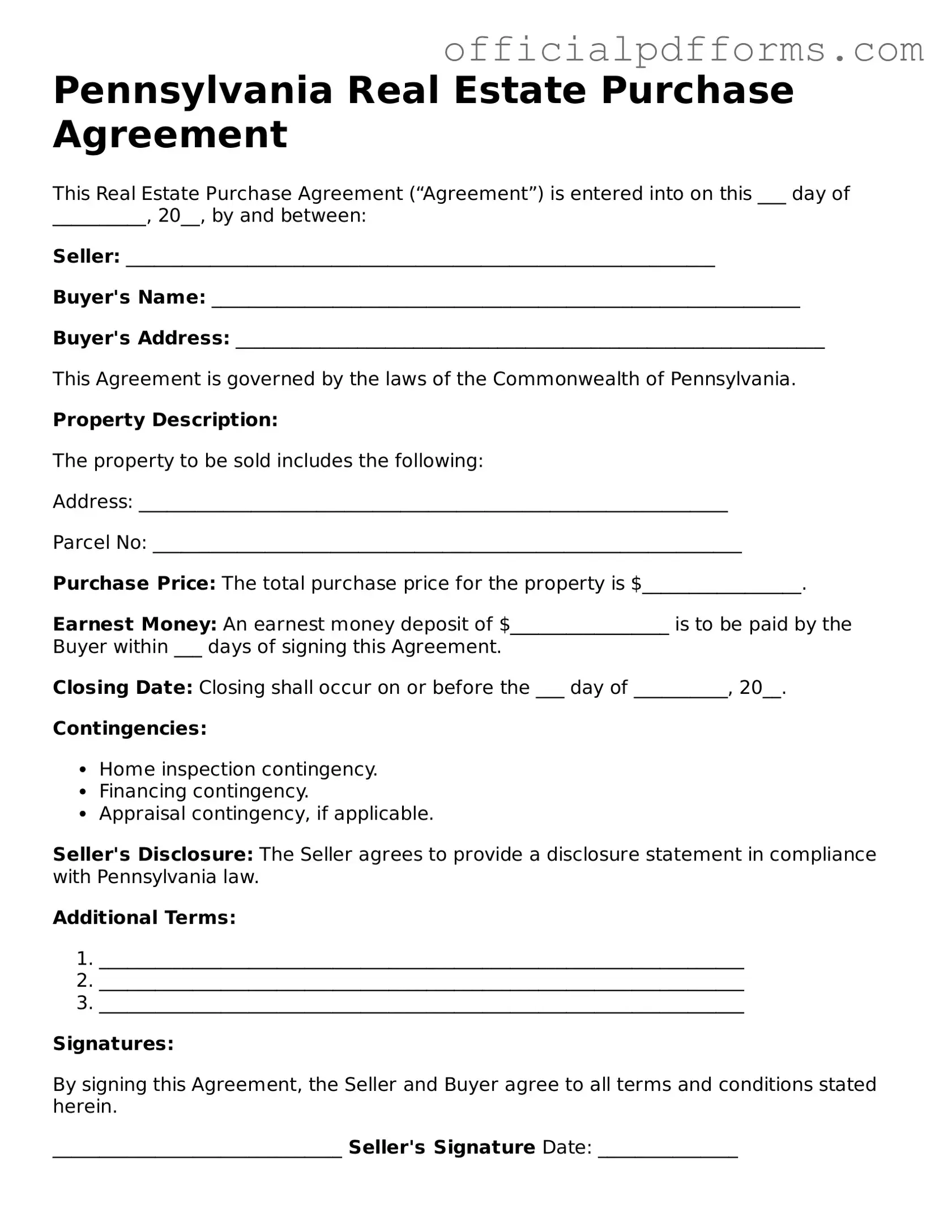What is a Pennsylvania Real Estate Purchase Agreement?
The Pennsylvania Real Estate Purchase Agreement is a legal document that outlines the terms and conditions under which a property is sold. It serves as a binding contract between the buyer and the seller, detailing the rights and obligations of each party. This agreement typically includes information such as the purchase price, property description, closing date, and any contingencies that may apply.
What are the key components of this agreement?
Several essential elements make up a Pennsylvania Real Estate Purchase Agreement. These include:
-
Parties Involved:
Names and addresses of both the buyer and the seller.
-
Property Description:
A detailed description of the property being sold, including its address and any relevant parcel numbers.
-
Purchase Price:
The agreed-upon price for the property.
-
Contingencies:
Conditions that must be met for the sale to proceed, such as financing or home inspections.
-
Closing Date:
The date when the property transfer will take place.
-
Signatures:
Both parties must sign the agreement to make it legally binding.
How does the agreement protect both buyers and sellers?
The Pennsylvania Real Estate Purchase Agreement is designed to protect the interests of both parties. For buyers, it ensures that they have a clear understanding of what they are purchasing and establishes conditions under which they can withdraw if certain criteria are not met. Sellers benefit from having a formal agreement that outlines the terms of the sale, providing them with legal recourse if the buyer fails to fulfill their obligations.
What happens if either party wants to back out of the agreement?
If either party wishes to back out of the agreement, the consequences depend on the specific terms outlined in the contract. Generally, if a buyer backs out without a valid reason, they may forfeit their earnest money deposit. Conversely, if a seller withdraws without cause, they may face legal action or be required to return the buyer's deposit. It's crucial to review the contingencies included in the agreement, as they can provide a way for either party to exit the contract without penalties.
Can the agreement be modified after it is signed?
Yes, the Pennsylvania Real Estate Purchase Agreement can be modified after it is signed, but both parties must agree to any changes. This typically involves drafting an amendment to the original agreement, which should be signed by both the buyer and the seller. It's important to document any modifications clearly to avoid confusion or disputes later on.
Is it advisable to use a lawyer when drafting or reviewing the agreement?
While it's not legally required to have a lawyer when drafting or reviewing a Pennsylvania Real Estate Purchase Agreement, it is highly advisable. A legal professional can provide valuable insights, ensure that the agreement complies with state laws, and help protect your interests. Their expertise can be especially beneficial if any complex issues arise during the transaction.
